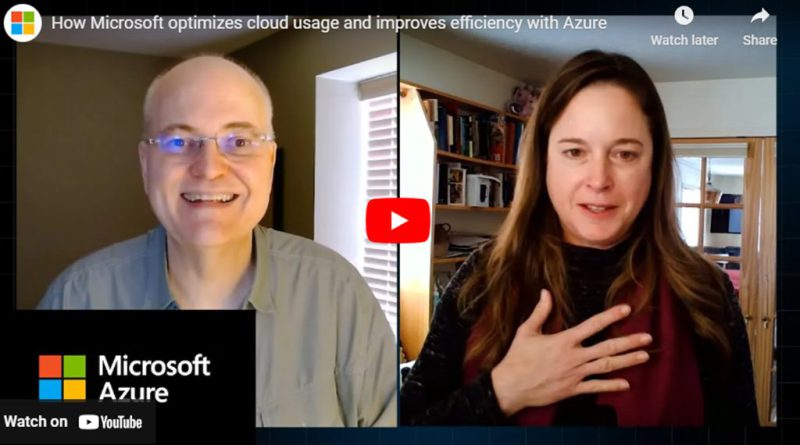Lessons learned optimizing Microsoft’s internal use of Azure
At Microsoft, we learned a lot from moving our internal operations to Microsoft Azure, lessons we use to make our cloud products work better for our customers. As a top user of Azure, we understand our customers’ obstacles and constraints. Just like them, we’re under pressure to "do more with less" in these challenging fiscal times. As such, we're sharing our story of first migrating to Azure, and then optimizing our usage to bring our costs down. Our goal is to help our customers do the same—help them migrate to the cloud, optimize their cloud costs, and strategically invest in projects to boost their growth.
“It’s exciting to talk about our own IT journey, our migration, our optimization, [and] how we’re reinvesting in the different types of solutions that are possible within the cloud, compared to how we did things before." —Pete Apple, Principal TPM Architect at Microsoft
After helping Microsoft migrate to Azure, Apple is now spending his time helping the company get more out of being on the cloud. "We continue to shift [how] we think about the technology, the processes, the ways that we enable our internal customers and our employees to be successful in their day-to-day work and have less friction," Apple says.
Being Microsoft’s customer zero
Many people think we get all our Microsoft technology and solutions for free, but that’s not the case when it comes to Microsoft Azure—we pay full price for it, just like any customer.
“When I talk to customers, they’re always a little bit surprised to hear that we pay the same rates for Azure that they do. We operate with the same licensing, the same pricing, which is really, really important. This informs the role we play as customer zero, when we’re having our own experiences with Azure. We work on improvements with the product group—before our customers can possibly have a bad experience." — Heather Pfluger, General Manager of Infrastructure & Engineering in Microsoft Digital Employee Experience.
Paying full price keeps the pressure on Pfluger’s team to be as efficient as possible with the company’s internal use of Azure. “Like any customer, we must consider competing timelines, optimization goals, and all relevant budgets,” she says. “As customer zero, we not only use Azure cloud services for our business needs—like any other enterprise—but also, we constantly harness our knowledge and insights to envision the right experience in the first place.”
Being Microsoft’s customer zero gives Pfluger and her team the opportunity to give feedback to our product teams, which they use to make improvements that benefit our external customers. We evaluate our solutions to help make sure they meet various global requirements relating to security, privacy, and overall compliance.
Optimizing our cloud costs
Like our customers, we’re feeling pressure to reduce our costs during these challenging economic times. One way we’re doing that is by being efficient with our internal use of Microsoft Azure.
Pfluger was looking for ways to cut costs and says, “The first place we went to was Azure.” The information needed to find ways to trim was easily accessible within her team’s Azure dashboards.
“All of the data was there,” Pfluger says, explaining that there are many optimization levers within Azure that customers can pull. “We saved a tremendous amount of money just by reviewing our Azure spend and by using the tools available to us.”
Our Azure product team is trying to help us, and all our customers get more out of their Azure subscriptions. They’re focused on helping customers understand and forecast their costs, use data to optimize their workloads, use proactive cost-management practices to deploy fixes as quickly as possible, and leverage auditing to identify opportunities to fine-tune their operations even more.
Learn more about optimizing your Azure migration
Read this Azure optimization blog post to get more detail on our internal cloud journey here at Microsoft.
Source: Azure Blog Feed

